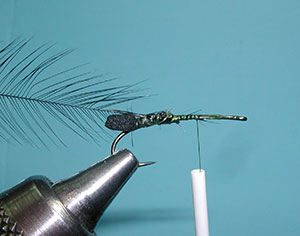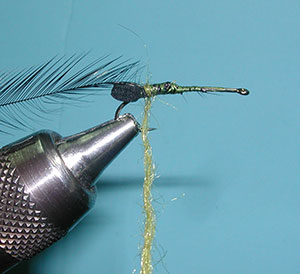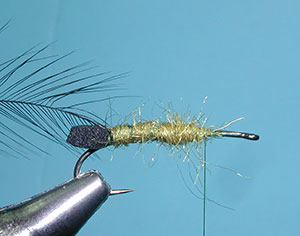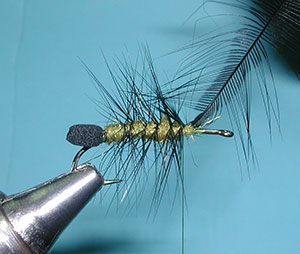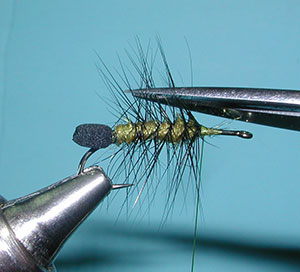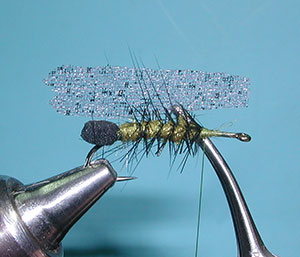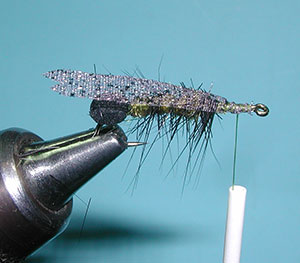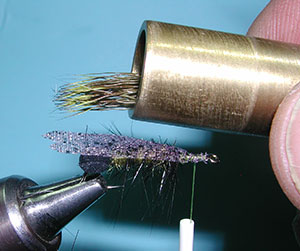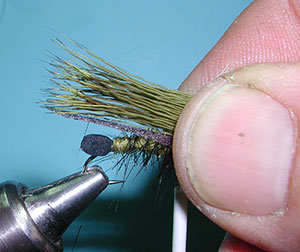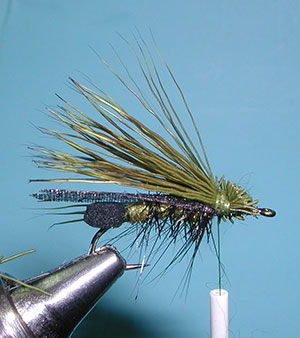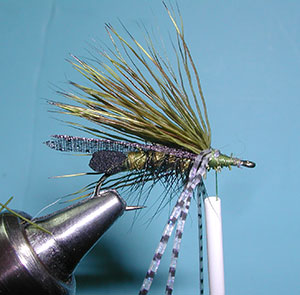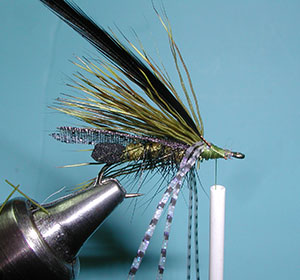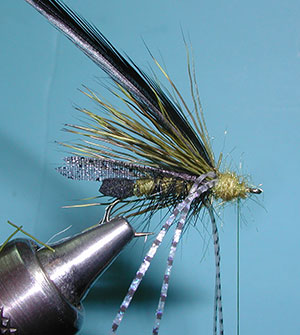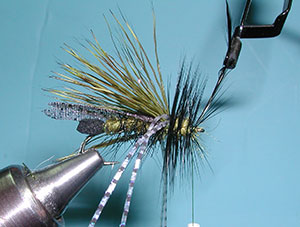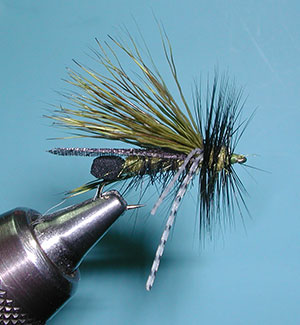Bill’s Skwala Stonefly – built on a strong foundation

Bill’s Skwala Stonefly
Tying Instructions
| Materials
to Order Material, click the link |
|
|---|---|
| Hook | Daiichi 1260, #10 or Daiichi 1270, #10 |
| Thread | Veevus Olive 10/0 |
| Body | Golden Olive Laser Hair Dubbing |
| Egg Sack | 2mm Black Foam |
| Underwing | Mottled Medium Dun Web Wing |
| Wing | Olive Dyed Deer Hair |
| Legs | Black Barred Grizzly Flutter Legs |
| Hackle | Black Rooster Cape Hackle |
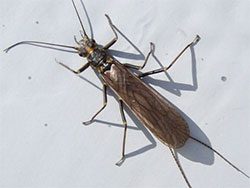

Bill Carnazzo
Bill’s Skwala Stonefly
Bill’s Skwala Stonefly is a pattern designed by the late Bill Carnazzo, a guide of West Slope Sierran Streams. He was one of those passionate fly fishers who volunteered his time to teach fly fishing. Bill taught a class on fly fishing at Sierra College and was a fixture at Kienes Fly Shop for many years. Bill was also one of the founders of Granite Bay Flycasters.
Influenced by Ralph Wood
His Skwala stonefly is based on a pattern that another Sierran fly fisher, Ralph Wood, designed and Bill added his own modifications. Bill recognized two qualities that the Skwala Stone must have: 1) Sparsely tied fly and 2) a Yellowish Olive color on the underside with a dark olive color on the back.
Skwala Life Cycle
The Skwala Stonefly, also called Large Springfly or Short-Winged Springfly, emerge early in the year, mid January, latest end of February, if the winter is colder. Interesting fact about them is that they emerge privately, hidden in crevices of stones, instead of out in the open, like other stoneflies. Most fisherman notice them only when they start their mating flights. Their egg-depositing is also specific as they prefer warmest parts of the day, mostly afternoons and when the water is calm.
Skwalas tend to float long distances without being noticed on the surface of the water, partly due to their calm behavior (they do not flutter their wings as their cousins), and partly due to their dark coloring. Their preference for warmer, calmer waters, combined with their early winter activity, causes their numbers to decrease after harsh and long winters and increase following warmer ones. Skwala patterns range in size from #8 to #12.


